Creating STEM Environments with Loose Parts
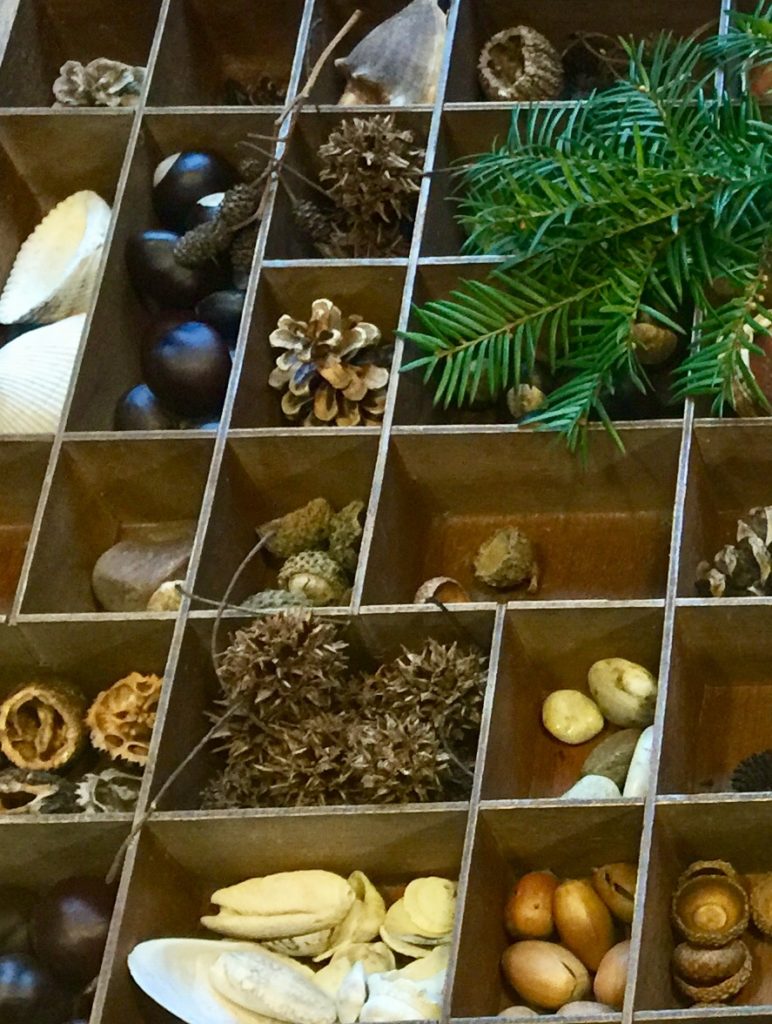
As I look around me, I see busy, contented children. Jimmy and Tali are seeing how high they can stack their rocks. Eve and Noa are creating a tea party for fairies near the sandbox. Eleanor and Salli are creating homes and meals for the squirrels who frequent the rain garden. Everyone is happy and learning. We call this a “play buzz.”
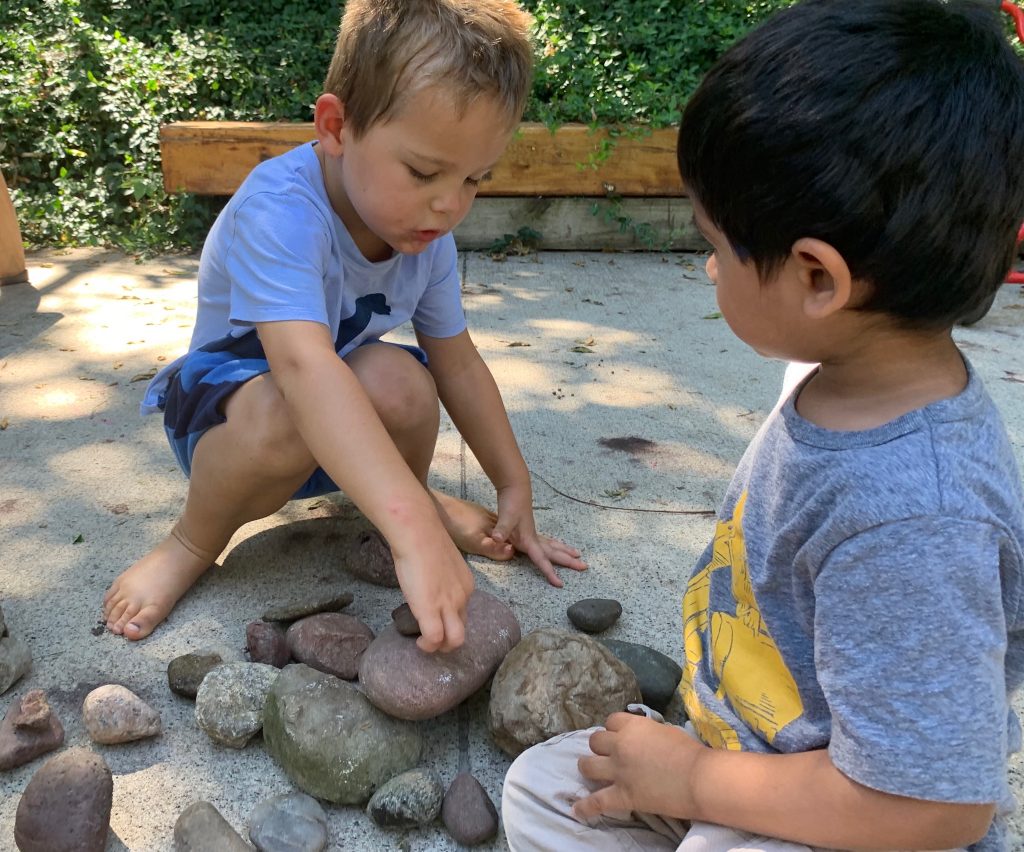
When I stop and take a closer look, I see that the children are not only playing happily, but working on math and science early learning standards through play with loose parts.
Architect Simon Nicholson, who developed the theory of loose parts in 1972, believed that loose materials that could be carried, combined, rearranged, lined up or taken apart and put back together in multiple ways provided more opportunities for creative play than static or fixed materials and environments.
Loose parts are materials that can be used alone or combined with other materials (Kabel, 2010). By creating opportunities to introduce math and science concepts—along with observations, predictions and data collection through loose-part play—we allow our students to experiment and work their way through their STEM explorations.
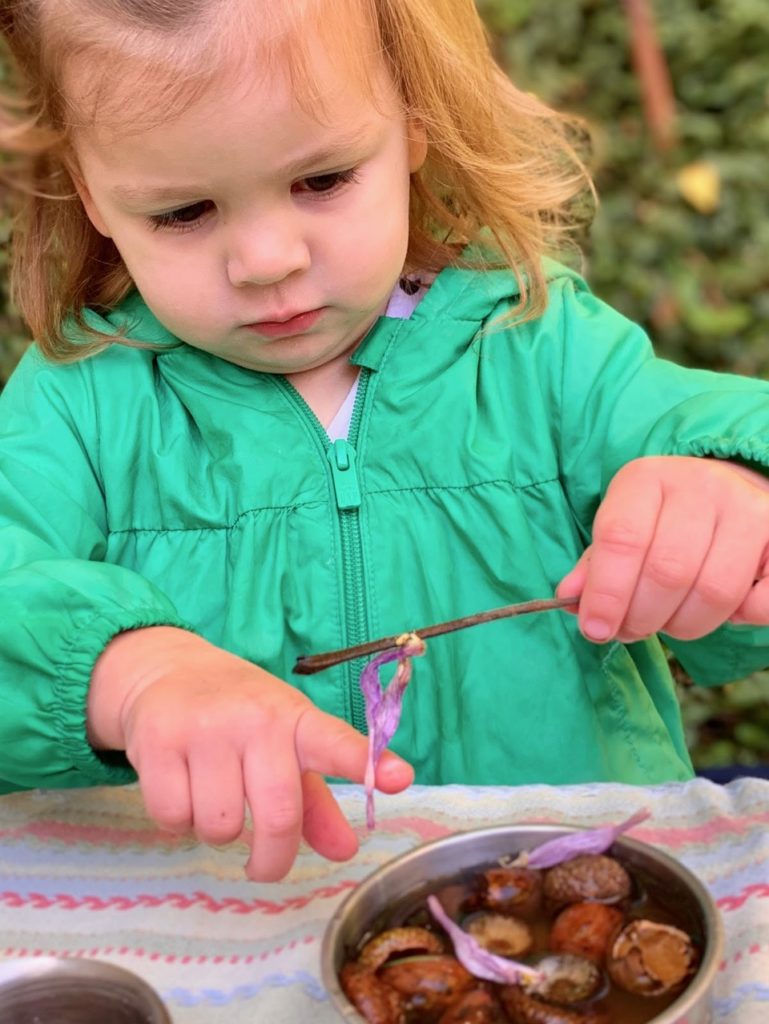
In outdoor classrooms or family backyards, educators and parents are discovering the beauty of loose parts in children’s learning and play experiences. The environment IS our curriculum. When we add natural elements to play areas, we create STEM-rich environments with myriad opportunities to solve problems in deep and complex ways.
As more and more classrooms and families return to the outdoors, simply giving our children the gift of time will facilitate STEM learning. This type of play comes easily to young children and can be far more productive than the worksheets, number cards and memorization activities that may be too advanced for your earliest learners.
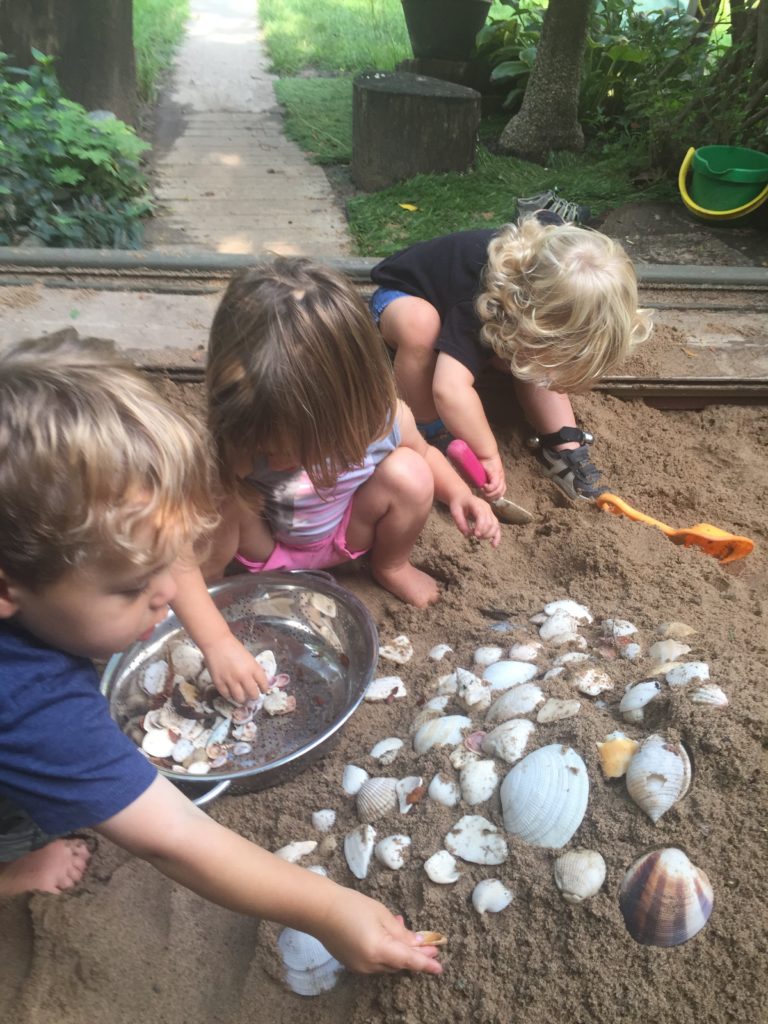
We like to think of loose parts as acorns, bark, dirt, fabric, feathers, flower petals, leaves, moss, pebbles, pinecones, pine needles, rocks, sand, seeds, shells, sticks and whatever else may be native to your region.
We rarely take walks without bringing home all kinds of loose-part “treasures.”
Use what you have. If your loose parts are small and your early learners carry them around in containers to create “things” with, they are still playing with loose parts!

Take advantage of what you have around you and use these loose parts to set up a STEM-rich environment. We also use blocks, people, animals and other manipulatives. Loose parts can range from dramatic play props to toy cars to pots, pans and pouring devices. If your environment doesn’t already contain a collection of loose parts, I strongly suggest that you add them. Then stand back and observe your early learners to see how their play is transformed!
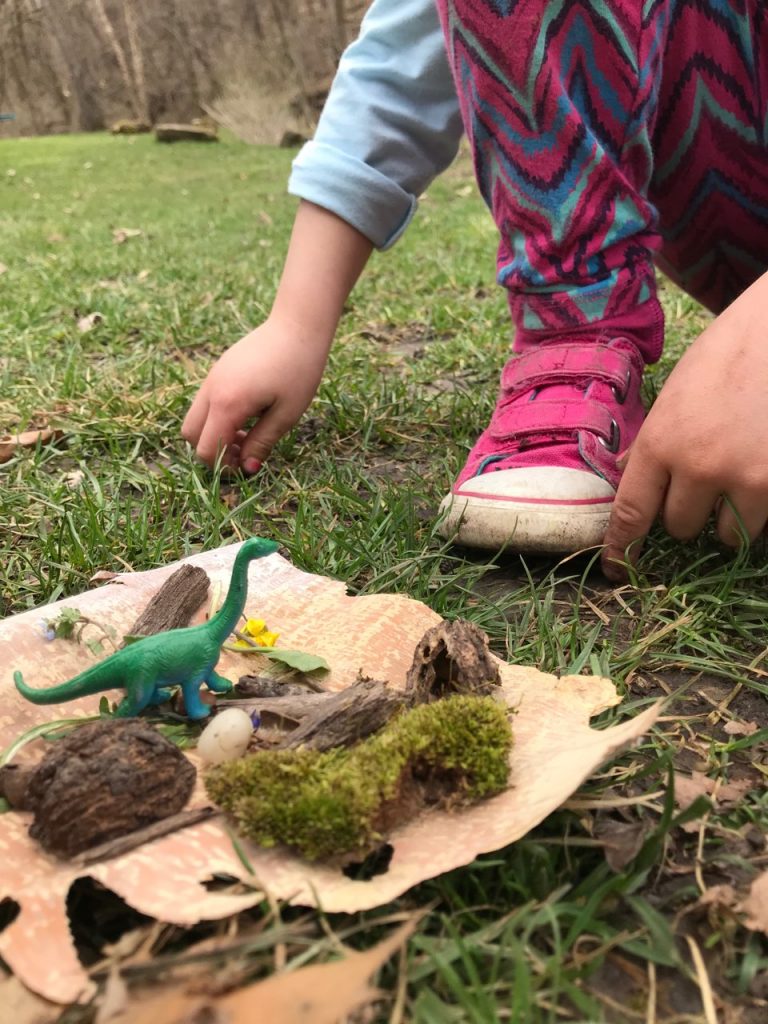
The beauty of loose parts is that they can be moved, which gives children the power to create new learning adventures every day. When materials are displayed in visually pleasing ways, this sends a message that you respect the materials and the creativity that they inspire.
Storage is another important piece of the loose-parts puzzle. A well-organized storage system imparts a sense of order and helps the children access the parts more easily. Children need to know where the loose parts are stored to be able to design their play experience—and to put their materials away when their project has been completed.
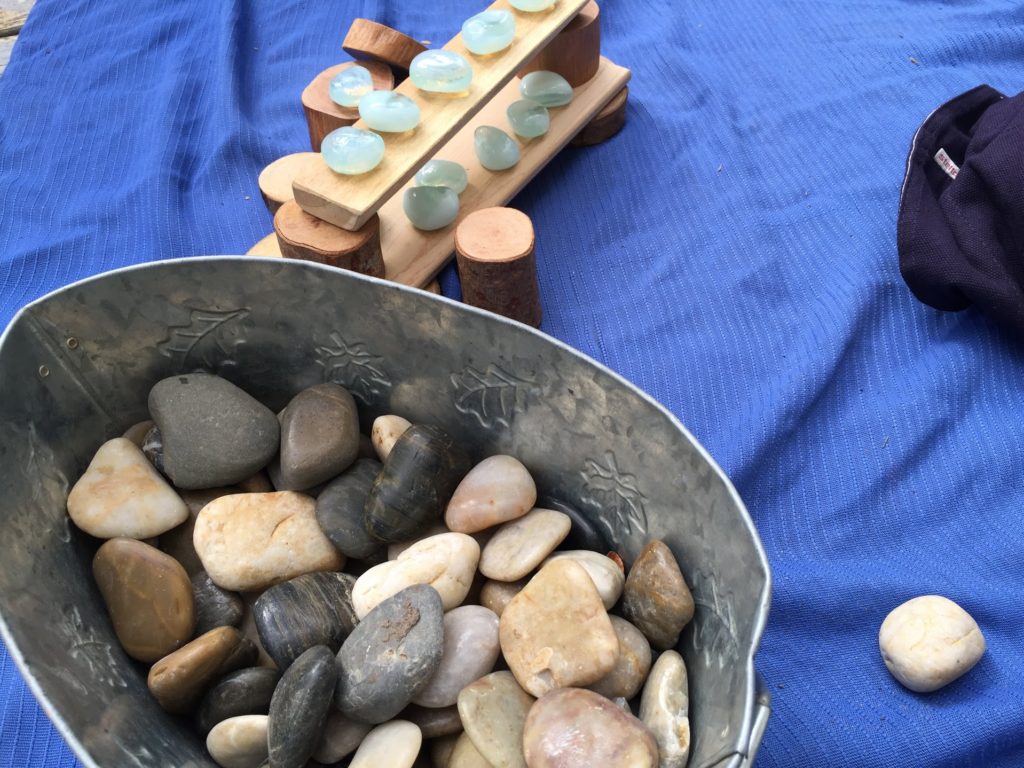
Outdoors, we use galvanized buckets, plant containers, crates or other containers for loose-parts storage. Use your imagination. I can tell you from practice that the happier the container makes you, the more relaxed you will be with loose parts.
Your outdoor storage will be more successful if you carefully determine the placement of your storage before you begin. If you move the storage every day, it will cause confusion.
Also, I know that some people think that more is better with regard to loose parts. But loose parts encourage divergent thinking (a thought process used to generate creative ideas by exploring a variety of potential solutions). So less is actually more.
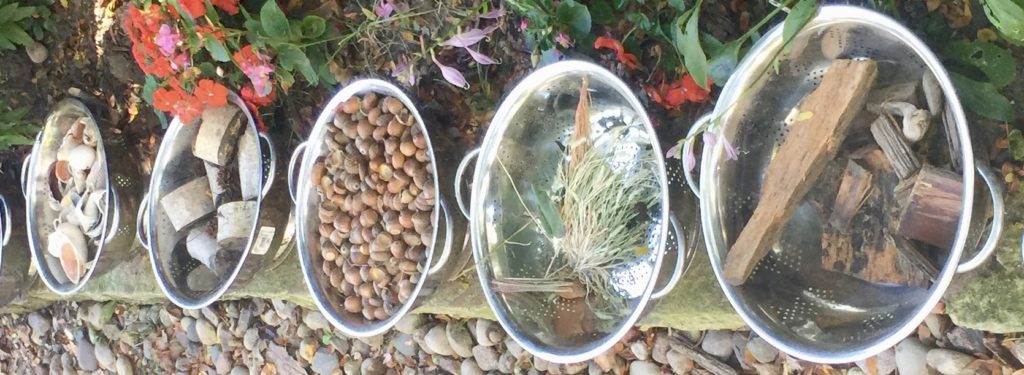
Also, be aware that your buckets and baskets will likely get dumped out and used as loose parts instead of storage containers.
That’s a struggle for me. Usually, it means that I need more containers for the children to use in their loose-parts play. I recently added colanders for outdoor loose-parts storage. This has been a game-changer. Rain and snow drip through the holes, allowing the loose parts to drain and dry quickly. Look for them at your local resale shop or scout some out at garage sales to start your collection. They are truly the ideal container for outdoor storage.

Indoors, I try to keep our natural loose-part materials in wood bowls or sturdy baskets that are soothing to the eye and create a sense of order and tranquility.
STEM is all about discovery and exploring the world around us. When our early learners ask questions or wonder how or why something works, they are building a STEM knowledge base. So create an environment rich in loose parts and let the learning begin!
Document the children’s progress as they work through their theories, predictions and observations. You will witness design thinking, cause-and-effect epiphanies and collaboration between children like never before!
I really like the idea of using colanders for storage outdoors.
I really like the idea and how this activity connects children with spatial relationships. As I am a learning graduate student, I am exploring different methods to introduce spatial relationships. This activity caught my attention with all the provided information and the photos.
i love that you can teach math and problem solving anywhere…..not just in a classroom